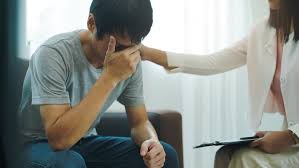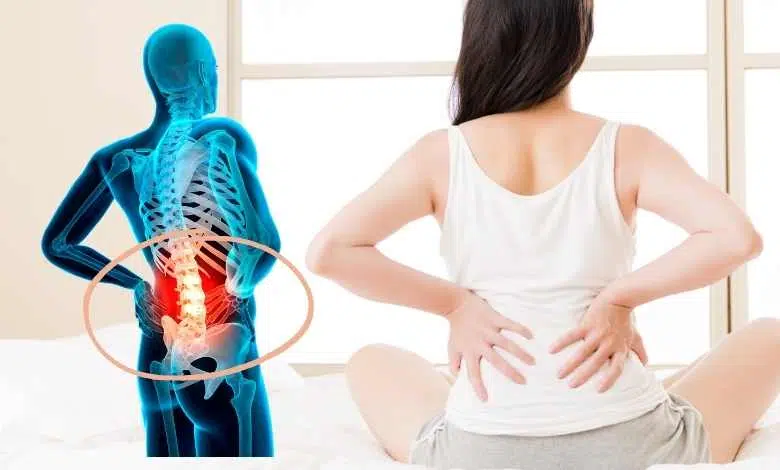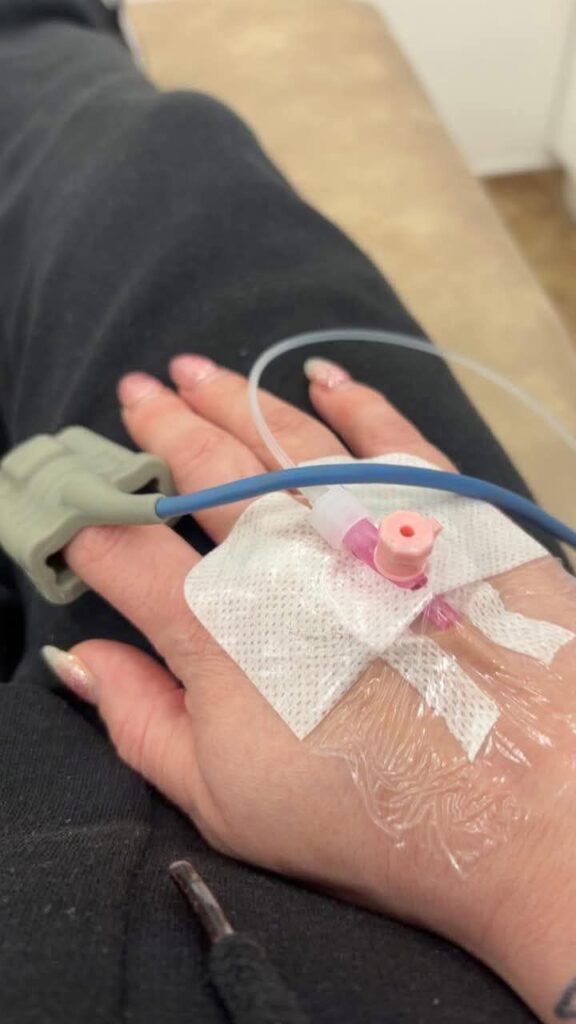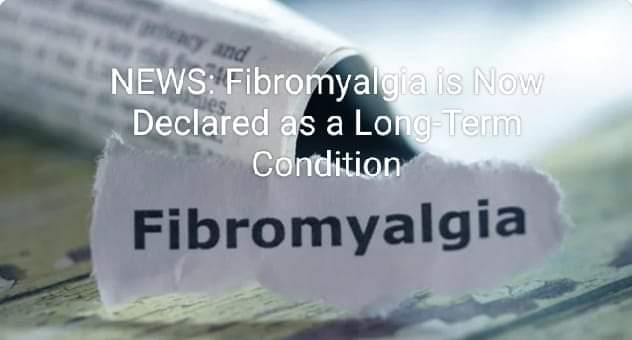By Jenn Sinrich
Medically reviewed by Lindsay Cook, PharmDPrint
Table of Contents
- What It Is
- Symptoms
- Diagnosis
- Causes
- Treatment
- Coping
Depression is a common and serious mood disorder that impacts the way an individual feels, thinks, and acts on a daily basis. It also goes by the name major depressive disorder (MDD), or clinical depression.
Someone who is depressed may experience a lack of interest and excitement in everyday activities that they once enjoyed, and the overall emotional toll that depression can take on a person’s wellbeing can lead to emotional, physical, and mental issues that can impact nearly every facet of their life.
This serious condition is far more than a bout of the blues. Depression is a persistent condition that diminishes a person’s ability to function in their day-to-day life and can manifest with physical symptoms as well, including chronic pain or gastrointestinal problems.
For an individual to receive a diagnosis of MDD, their symptoms must have been persistent for more than two weeks. Typical treatment includes psychotherapy as well as medications. In more severe cases of a depressive episode, hospitalization may be required, especially if the individual poses a risk of self-harm or suicide.
:max_bytes(150000):strip_icc():format(webp)/major-depressive-disorder-5092483-Final-4c9822610a1b4f4d945d5725e60ebbaf.jpg)
What Is Major Depressive Disorder?
Depression goes far beyond the occasional feelings of sadness. Sadness is a normal human emotion, and there’s nothing wrong with feeling sad now and then, especially when there’s a very obvious root cause, such as being passed up for a promotion or something even more tragic such as the loss of a loved one.
But when a person experiences constant sadness marked by feelings of intense loss of interest, hopelessness, and despair for a prolonged period of time, they are experiencing something much more severe such as major depressive disorder.
MDD may not be triggered by anything in particular. It not only diminishes your ability to enjoy things but it also leads to side effects that take a deeply emotional toll on the person with the condition.
Major depressive disorder can disrupt nearly every facet of your daily life, including your ability to sleep and wake up, eat, communicate, work, maintain healthy relationships, and care for yourself and your loved ones. Some people may have bouts of depression separated by years, while others may experience depression on an ongoing basis.
While there is often a fine line between prolonged sadness and depression—particularly when bereavement is involved— MDD is diagnosed and treated based on an established set of criteria by a psychiatrist, therapist, or other qualified specialists.
Types
There are several specifiers that can further clarify the diagnosis of major depressive disorder, including:
Atypical Depression
The American Psychiatric Association considers this no longer to be a separate disorder, but rather major depressive disorder with atypical features.
Though it varies from person-to-person, it involves mood reactivity, increase in appetite, increased sleep, leaden feeling in the arms or legs, and sensitivity to rejection.
What Is Atypical Depression?
Catatonic Depression
Catatonic depression causes abnormal movements and an inability to function verbally and physically for an extended period of time.
Symptoms include not moving or talking or fast and unpredictable movements, changes in appetite and wakefulness, sudden weight loss or gain, feelings of deep sadness as well as guilt, and difficulty concentrating.
Depression With Anxious Distress
This type of depression is also associated with a great deal of anxiety. To receive this clinical diagnosis, someone suffering must experience persistent feelings of anxiety, including restlessness and difficulty participating in their daily activities due to a fear that something terrible will happen.
Melancholic Depression
This form of major depressive disorder is indicative of intense loss of pleasure in activities, along with hopelessness, to the point where a person may even feel that their life is not worth living. Like other subtypes, a patient may experience prolonged sadness, anxiety, lack of sleep, as well as changes in their body movement.
Peripartum Depression
This type of major depressive disorder is more commonly known as postpartum depression. It is a major depressive disorder that occurs during pregnancy or after birth.
It’s quite common, with an estimated 3% to 6% of mothers experiencing the condition.1 It is associated with stress, anxiety, sadness, hopelessness, despair, extreme exhaustion, and loneliness.
What Is Perinatal Depression?
Seasonal Affective Disorder (SAD)
Now known as major depressive disorder with seasonal pattern, this type of major depressive disorder tends to crop up during the fall and winter months when the weather is colder and the sun sets earlier. It is symptomatic of many of the same mood changes as other subtypes, including feelings of sadness, changes in sleep, low energy, feelings of hopelessness and difficulty concentrating.
What Is Seasonal Affective Disorder (SAD)?
According to 2017 statistics from the National Institute of Mental Health (NIMH), 7.1% of adults in the United States—roughly 17.3 million—had at least one major depressive episode. Women were more likely to be affected than men (8.7% versus 5.3% respectively).2
List of Documented Psychological Disorders
Symptoms
These are the most common signs and symptoms associated with major depressive disorder, according to the National Institute of Mental Health:3
- Persistent sadness, anxious, or “empty” mood
- Feelings of hopelessness, or pessimism
- Irritability
- Feelings of guilt, worthlessness, or helplessness
- Loss of interest or pleasure in hobbies and activities
- Decreased energy or fatigue
- Moving or talking more slowly
- Feeling restless or having trouble sitting still
- Difficulty concentrating, remembering, or making decisions
- Difficulty sleeping, early-morning awakening, or oversleeping
- Appetite and/or weight changes
- Aches or pains, headaches, cramps, or digestive problems without a clear physical cause and/or that do not ease even with treatment
- Thoughts of death or suicide, or suicide attempts
The risk of suicide among people with major depressive disorder is elevated compared with the general population. Although the exact risk is difficult to put a number on, it may be over 6%.4
What’s more, depression is not only common in adults. In fact, an estimated 3.2% of children aged 3 to 17 have diagnosed depression, according to the Centers for Disease Control and Prevention (CDC).5
Younger children may exhibit irritability and clinginess, complain about physical aches and pains, refusing to go to school, or be significantly underweight. Teens may avoid social interaction, do poorly in school, be overly sensitive and easy to anger, or turn to drugs and alcohol.6
Alcohol and drug abuse are also common in adults with depression. Some studies suggest that MDD co-occurs in 32.8% with alcohol abuse disorder and 44.3% with substance abuse disorder.7
Severe cases may manifest with symptoms of psychosis, including delusion and, in rare cases, hallucination. When this occurs, especially in older people, it can be misdiagnosed as dementia.8
Understanding the Signs of Depression in Men
Diagnosis
MDD is diagnosed based on a psychiatric history and mental status evaluation (MSE) by a qualified mental health specialist. The diagnosis is based on the criteria outlined in the “Diagnostic and Statistical Manual of Mental Disorders, Edition 5” (DSM-5) by the American Psychiatric Association (APA).
For MDD to be diagnosed, a person must be experiencing five or more of the following symptoms during the same two-week period and at least should either be (1) depressed mood or (2) the loss of interest or pleasure:9
- Depressed mood most of the day, nearly every day.
- Diminished interest or pleasure in all, or almost all, activities most of the day, nearly every day.
- Significant weight gain, significant weight loss unrelated to dieting, or decreases or increases in appetite, nearly every day.
- A slowing down of thought and a reduction of physical movements.
- Fatigue or loss of energy, nearly every day.
- Feelings of worthlessness or excessive or inappropriate guilt, nearly every day.
- Indecisiveness or the diminished ability to think or concentrate, nearly every day.
- Recurrent thoughts of death, suicidal ideation, a specific plan for suicide, or a suicide attempt.
Here are some possible differential diagnoses:10
- Neurological causes such as cerebrovascular accident, multiple sclerosis, subdural hematoma, epilepsy, Parkinson disease, Alzheimer disease
- Endocrinopathies such as diabetes, thyroid disorders, adrenal disorders
- Metabolic disturbances such as hypercalcemia, hyponatremia
- Medications/substances of abuse: steroids, antihypertensives, anticonvulsants, antibiotics, sedatives, hypnotics, alcohol, stimulant withdrawal
- Nutritional deficiencies such as vitamin D, B12, B6 deficiency, iron or folate deficiency
- Infectious diseases such as HIV and syphilis
- Malignancies
Causes
Multiple factors play a role in depression, which the APA categorizes as biochemical, genetic, personality, and environmental.11 These risk factors frequently intersect and can predispose a person to MDD:
- Genetics: A family history of depression is common in those suffering from the condition. Research suggests that approximately 40% of the time genetics determines whether or not someone will become depressed.12
- Brain chemistry: Some research suggests that an imbalance of neurotransmitters, which help regulate mood, plays a role in depression.13
- Certain medical conditions: Some medical conditions, such as thyroid conditions, sleep disorders, and certain cancers are associated with higher rates of depression.14
- Substance use: Individuals who abuse alcohol and drugs, including prescription drugs, are more prone to depression.15
- Stress: Life experiences do play a role, particularly stress. The release of the hormone cortisol may affect the neurotransmitter serotonin and lead to depression, according to research.16
- Poor nutrition: Research has found that a diet lacking in certain essential nutrients may make a person more prone to depression.17
What Does Endogenous Depression Mean?
Treatment
Here are some of the most common forms of treatment for major depressive disorder.
Psychotherapy:
- Cognitive behavioral therapy (CBT): This is a type of psychological treatment that involves talking with a mental health counselor to correct unhealthy thoughts and behaviors that might be contributing to your condition.
- Psychodynamic psychotherapy: Explores how underlying conflicts and emotional patterns contribute to your distress.
- Interpersonal therapy: This is a type of therapy that focuses on the patient’s relationship with other people in their life.
- Supportive therapy: This is a form of psychotherapy that utilizes a mix of techniques, such as cognitive behavioral and interpersonal therapy, to alleviate symptoms.
Medications:
- Selective serotonin reuptake inhibitors (SSRIs): These medications are usually the first line treatment when it comes to what doctors tend to prescribe for depression. They are considered safer than some of the older antidepressants and tend to come with fewer side effects. Common SSRIs include Prozac (fluoxetine), and Lexapro (escitalopram).
- Serotonin-norepinephrine reuptake inhibitors (SNRIs): This class of medications is used to treat depression as well as other mental health conditions such as anxiety. Common SNRIs include Pristiq (desvenlafaxine), Cymbalta (duloxetine), and Fetzima (levomilnacipran).
- Atypical antidepressants: These include Wellbutrin (bupropion), Remeron (mirtazapine), nefazodone, trazodone, and others.
- Tricyclic antidepressants: Examples are Elavil (amitriptyline), Anafranil (clomipramine) and Norpramin (despipramine).
- MAOIs: Marplan (isocarboxazid), Nardil (phenelzine), and Emsam (selegiline)
- N-Methyl-D-Aspartate (NMDA) receptor antagonists: Auvelity (dextromethorphan and bupropion), which is the first oral NMDA receptor antagonist approved to treat MDD
- Atypical antipsychotics: These medications are used alone in combination with other medications to treat depression and other mental health conditions such as bipolar disorder and schizophrenia. Examples include Risperdal (risperidone) and Vraylar (cariprazine).
- Selective serotonin 1a (5-HT1A) receptor agonists: Exxua (gepirone) is the first and only FDA-approved 5-HT1A receptor agonist approved for MDD. Exxua does not come with risks or side effects associated with other treatments for MDD, such as weight gain and sexual dysfunction.
- Additional medications: These include anxiolytics, mood stabilizers, and antipsychotics.
Procedures:
- Electroconvulsive therapy (ECT): Performed under general anesthesia, this procedure sends electric currents through a patient’s brain to cause a short seizure that alters brain chemistry. These changes in a patient’s brain are thought to help reduce certain symptoms associated with major depressive disorder.
- Transcranial magnetic stimulation (TMS): This procedure is less invasive than ECT and involves stimulating nerve cells in the brain via the use of magnetic fields.
- Ketamine infusion therapy: With this type of treatment, the drug ketamine is injected into a patient via IV at a healthcare facility to help reduce symptoms associated with major depressive disorder.
Coping
You don’t have to feel alone in your mission to cope with your depression. Here are some practical ways of healing yourself:
- Get moving. Exercise is one of the best things you can do to ward off feelings of depression. When you are physically active, your body releases feel-good endorphins that help replenish your stores that may be depleted as a result of your illness.
- Be easy on yourself. Healing takes time and is not always linear. You may feel better one day and worse the next. The best thing you can do is to set small goals for yourself, such as enjoying one thing you love in a given week or spending quality time with a loved one.
- Socialize. It might not always be your first choice of things to do, but spending time with others, be it colleagues or your close friends and family, can enhance your mood and put you on the path to healing.
- Put a hold on big decisions. While you’re coping with depression it’s best not to make major life decisions, such as moving to a different city or state, getting married, or having a child. These decisions are better left to a time when you feel more grounded and happier.
- Reference<https://www.verywellhealth.com/major-depressive-disorder-5092483



